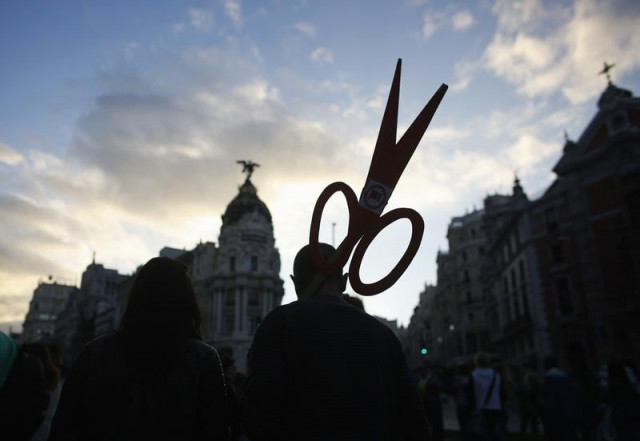
Measures of austerity or hostility
While the intention of austerity is a noble one, and must be appreciated as the country strives for fiscal consolidation, we cannot forget that austerity is not a novel concept to the leaders of this country. Never did it work in Pakistan or anywhere else in the world. Although Imran Khan’s intentions are well received, however his strategy is under scrutiny by PTI voters, who await the by-elections.
In his first address to the nation on August 19, Khan claimed that this policy would trickle down to the public who have long been resentful of the corruption and ‘VIP culture’ displayed by their earlier chosen representatives. There was perhaps no news more buzz-worthy than Khan’s decision not to move into the luxurious Prime Minister House but to his critics this was a mere spectator-friendly measure. Soon the prime minister’s commuting became a national joke with every one clamouring for helicopter taxi service. In addition to this, downsizing of the number of employees serving in the PM House, demands thought.
The public is not privy to the information whether these poor employees lost their jobs or have been adjusted in other government departments as most of them would be having pensionable employment with the government of Pakistan. Furthermore, the move to auction more than 100 luxury cars worth $16 million lacked a systematic strategy, as the government was able to earn approximately $1 million out of this exercise. Again, the public is not privy to the information whether the unsold cars will continue to be the white elephants for the national exchequer, as earlier portrayed by the PTI.
Moving on to matters of fiscal policy, the PTI government’s decision to cut expenditure on discretionary funds was met with much alarm by politicians. In Pakistan, representatives to the national and provincial assemblies win popular vote by promising to continually work for the development of their respective constituencies. By cutting off spending in this sphere, there will be greater public dissent as the people would then be less likely to re-elect politicians when they get nothing in return.
Yet another unfortunate cut made in the ‘mini-budget’ presented by Finance Minister Asad Umar, was the reduced spending on the Public Sector Development Programme. This will have an adverse impact on the lives of salaried workforce who may find themselves unemployed due to insufficient funding by the government (the federal development programme now has only Rs725 billion allocated to it after the budget cut).
Austerity 'drive': 61 luxurious PM House vehicles sold at auction
The PTI’s anti-corruption and financial mismanagement slogans thrived due to the previous government’s carelessness. Backed by information, such as Nawaz Sharif’s extravagant expenditure of over Rs650 million on 64 international government tours (in the last five years), logically enabled positive public receptivity on the ban of unnecessary foreign tours, by the PTI government. But the PTI needs to understand that soon the public will realise that these expenditures were a drop in the ocean and such raw austerity really doesn’t change the life of the common man.
The PTI government is operating in a grey area as they too resort to old-fashioned public borrowing, in order to ride out of the storm. To assume that any long-term relief could be provided to the public in the government’s 100-day plan is a naïve thought. The government is being timid with socio-economic reforms that address the real issues of unemployment coupled with unskilled workforce, slump in manufacturing, low FDI, high interest rates for financing micro-enterprises and SMEs and a hopeless marginalised population. Jobs for all, investment and financing are the key factors of sustainable economic growth which will drive a clean, green and healthy Pakistan.
Published in The Express Tribune, October 11th, 2018.
Like Opinion & Editorial on Facebook, follow @ETOpEd on Twitter to receive all updates on all our daily pieces.













COMMENTS
Comments are moderated and generally will be posted if they are on-topic and not abusive.
For more information, please see our Comments FAQ